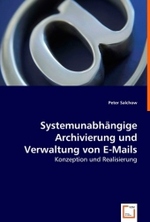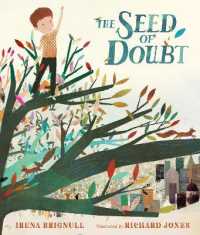- ホーム
- > 洋書
- > 英文書
- > Nature / Ecology
Full Description
The spectacular growth of the aquaculture industry during recent years has depended to a significant extent on the use of alien (introduced) species in many of the countries where the industry is a key revenue earner. The use of introduced aquatic species can bring with it many problems, both real and perceived. This timely book looks in detail at this extremely important area, providing a critical and objective evaluation of the role of alien species in this ever growing food production sector. Coverage includes detailed reviews of the definitions and invasiveness of alien species, the history of introductions and translocations, and the contribution and also negative impacts made by alien species. The book also contains several case studies covering major introduced species and a review of current international protocols pertaining to these issues. All major types of cultured species are encompassed by the book, including crustaceans, molluscs and finfish.
Contents
Preface. . Chapter 1: Introduction. Alien species: definition, ambiguities and controversies. Alien species and invasiveness. Aquatic alien species and the aquaculture industry; also relate in very general terms to alien species. Aquaculture - another paradox in food production; link with terrestrial crops, animal husbandry. . Chapter 2: History of Introductions/ translocations. Purposes and vectors of translocations. Deliberate/ inadvertent; culture for food, trash fish * Invertebrates * Finfish * Plants. . Chapter 3: Role of alien species in aquaculture. Contribution to production * Crustaceans * Molluscs * Finfish * Others. Current trends; recent major introduction events. Trade issues related to alien species. Socio-economic impacts * Initiation of industries e.g., salmon farming in SA * Import commodities e.g. tilapias in Asia * Role in food security, e.g. tilapias in Asia. . Chapter 4: Negative impacts of aquatic alien species. Negative impacts * Ecological * Disease/ parasites. * Crustaceans. * Molluscs. * Finfish. * Others * Genetic/ Biodiversity. * Intra-continental. * Inter-continental * Socio-economic. . Chapter 5: Case studies on important/ major alien aquaculture species . ( case studies that illustrate either good/bad, disease, social-economic, genetic or ecological points). Crustaceans; e.g. P. vannamei, crayfish, artemia. Molluscs, e.g. Pacific oyster in Europe and/or Australia. Finfish, e.g. salmonids, tilapia, carps. Others (?). Extent of introductions. Contributions to production/ comparison with natural range of distribution. Negative impacts * Ecological * Disease/ parasites * Genetic/ Biodiversity. Socio-economic. . Chapter 6: Current international protocols on introductions/ translocations. Evolution of regulatory measures on introductions/ translocations of aquatic species. Regulations * Why needed? * What are they? * Effectiveness/ implementation * Limitations * Relationships to other existing conventions, e.g. CITES etc. * Changes needed. . Chapter 7: Mitigating measures (?). * Role of indigenous species in aquaculture. * Risks associated with indigenous species. * Way forward. . Index.








